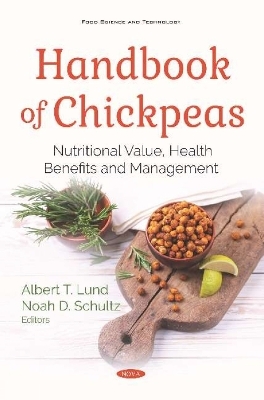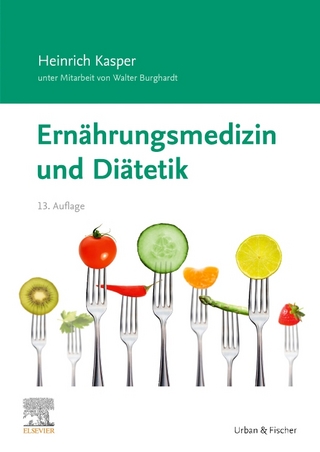
Handbook of Chickpeas
Nutritional Value, Health Benefits and Management
Seiten
2019
Nova Science Publishers Inc (Verlag)
978-1-5361-6374-2 (ISBN)
Nova Science Publishers Inc (Verlag)
978-1-5361-6374-2 (ISBN)
Legumes are an important source of proteins, carbohydrates, vitamins, minerals, and dietary fiber. Chickpea is one of the most consumed legumes in the world. It is an affordable food product for people who cannot get animal protein, giving them a nutritious substitute in their diet. As such, Handbook of Chickpeas: Nutritional Value, Health Benefits and Management discusses the current information regarding the nutritional value of chickpea. Following this, the authors highlight the nutritional value of domesticated Kabuli chickpeas used in different forms, as well as the impact of different factors which regulate the nutritional value. The authors then explore the nutritional value, health benefits, and uses of desi chickpeas in comparison to Kabuli chickpeas. Current information is presented regarding the amino acid profile and nutritional protein quality in raw and processed chickpea seeds and flours, the health or nutraceutical effects of chickpea protein isolates, hydrolysates or bioactive peptides and the generation of selenized proteins during sprouting and their antioxidant and anticancer potential. The demand for gluten-free products is increasing since the prevalence of gluten-related disorders is rising. As such, chickpea is studied in the context of replacing wheat/gluten in some types of gluten-free food to improve the quality of the gluten-free diet. Chickpea is also studied as a dairy-product substitute since it represents a good source of protein, iron, and fiber. Chickpeas are composed of interesting amounts of protein, fibers, iron, zinc, and others, arousing interest by vegetarians. Therefore, the use of chickpeas is studied as an important ingredient in a vegetarian diet to contribute to nutritional quality. The authors present the way in which legume proteins can be used to fortify some foods to increase nutritional value and balance amino acid content. The most important of these foods are bakery products. Current information related to starch digestion and glycemic index of raw/processed chickpea flours and starch isolates, undigested carbohydrates content in raw/processed chickpea and health effects of chickpea digestible and undigestible carbohydrates is also presented. Chickpea seeds are vulnerable, both in the field and in storage conditions to attack by several insect pests of economic importance, whereby infested grains lose their viability. Therefore, basic steps in order to control insects in warehouse or processing plants that must be followed are: monitoring for infestation detection, identification of the problem and insect control measures. Traditionally, preferred control options are carbamate and pyrethroid sprays as soon as the threshold has been reached, as insects grow rapidly and a few days delay in spraying can result in major crop damage and increased difficulty in control. The final study proposes that chickpea protease inhibitor concentrates exerted anti-genotoxic effects on LNCaP cells, supporting previous findings that Bowman-Birk inhibitors and protease inhibitors have a protective effect on oxidative damage. Chickpea may therefore play a role in prostate cancer prevention, however, further research is needed to fully understand the molecular mechanisms involved.
| Erscheinungsdatum | 29.11.2019 |
|---|---|
| Verlagsort | New York |
| Sprache | englisch |
| Maße | 152 x 229 mm |
| Gewicht | 774 g |
| Themenwelt | Medizin / Pharmazie ► Gesundheitsfachberufe ► Diätassistenz / Ernährungsberatung |
| Technik ► Lebensmitteltechnologie | |
| Weitere Fachgebiete ► Land- / Forstwirtschaft / Fischerei | |
| ISBN-10 | 1-5361-6374-0 / 1536163740 |
| ISBN-13 | 978-1-5361-6374-2 / 9781536163742 |
| Zustand | Neuware |
| Haben Sie eine Frage zum Produkt? |
Mehr entdecken
aus dem Bereich
aus dem Bereich
Indikation, Diagnostik, Therapie
Buch (2024)
Thieme (Verlag)
80,00 €
Unter Mitarbeit von Walter Burghardt
Buch | Softcover (2020)
Urban & Fischer in Elsevier (Verlag)
56,00 €


